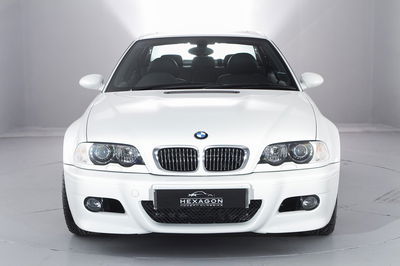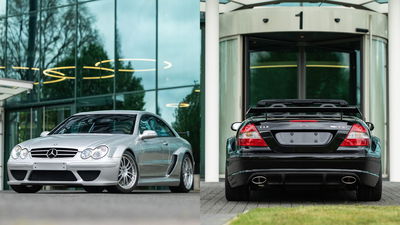How Do Torque Converters Work?

The transfer of power from any powertrain through to the transmission can be a fairly complicated process with hundreds of moving parts that all need to be synchronised all at the same time. From the cabin you are simply pushing a pedal and moving a gearstick or maybe just flipping a paddle, but everything going on under the floor pans is thoroughly engineered and developed to allow the smooth meshing of a long list of components to get your car on the move.
In a manual car, you have a clutch assembly that allows the connection and disconnection between the engine and the transmission - and therefore drive to the wheels. Engines have an idle which is set using a throttle stop, signifying the minimum engine speed at which the engine can sit at before it stalls due to a lack of air/fuel mixture entering the cylinders.
So without a clutch, when slowing down to a stop, an engine would stall as the load from the transmission would drag it below its workable rev limit. The clutch allows the disconnection required to keep the engine running and then the re-engagement along with some throttle to get the car up and running again.
In an automatic car however, there is no proper clutch - instead it’s replaced with a torque converter. It needs to do the same job as a clutch – allowing the engine to stay running while the transmission and wheels slow down to a stop – but it goes about it in a different and rather ingenious way. The torque converter is what’s called a fluid coupling – a device used to transfer mechanical rotational energy through fluid movement from one mechanical moving system to another.
It can replace a clutch due to the fact that it allows the engine to rotate freely by vastly reducing the torque delivery from the powertrain to the transmission. It never fully disconnects, as you can feel through the ‘creep’ that occurs if you take your foot off the brake of an automatic car from standstill.
The torque control is achieved through the use of a pump that sends fluid around the torque converter depending on the rotation of the crankshaft. Within the torque converter is a turbine which is rotated as the pumped fluid comes into contact with the turbine’s vanes, thus gauging the amount of torque that makes it to the transmission through the input shaft.

The casing of the torque converter is connected to the flywheel (which therefore spins at the same rate as the crankshaft) and within the housing is the turbine, the fluid centrifugal pump (or impeller) and a stator. The centrifugal pump effectively flings the transmission fluid into the fins of the turbine which in turn spins and transmits torque through to the transmission. The stator is there as a barrier to fling fluid straight back to the turbine instead of back to the pump, vastly increasing the efficiency of the system.

So at idle, the rate of fluid pumped to the turbine is very slow, which means very little torque is making its way from the engine through to the transmission. Then, as the crankshaft rotates faster with more throttle and in-turn rotates the flywheel, more fluid is propelled at a faster rate from the pump into the turbine.
The turbine then rotates faster, allowing more torque through to the transmission. Unfortunately, the transfer of energy from the pump through to the turbine can never be 100 per cent efficient - additional energy losses occur through this system which are amplified once the engine torque has also transferred through the gearbox and out of the differential.
This slight loss in energy between the pump and the turbine means that the turbine always spins slightly slower than the pump, which is the main reason why automatics in general have lower fuel efficiency ratings than their manual counterparts. Thankfully, torque converters have been developed recently to contain a lockup clutch which – at a certain speed – locks the turbine and pump together so that the drop in energy is eradicated.

So although automatic transmissions may seem simple from behind the wheel, the technology contained within the transmission tunnel is actually fairly complex but extremely effective.
The engineering behind a torque converter system is really quite spectacular and should definitely be shown plenty respect, seeing as it’s capable of connecting and modulating the drive from the engine to the wheels in such a smooth fashion that most drivers probably take it completely for granted.
With the vast majority of transmissions these days being fully automatic, the days of the simple pedal-operated clutch seem few and far between, making the torque converter one of the most important components on most cars being manufactured today.














Comments
Waiting for #savethemanuals
Why is it necessary to say that? Autos are useful too, you know. Just because the majority of petrolheads prefer manual doesn’t mean you have to bash on automatic transmissions
The Regra is R rated engineering porn!!!
Enter your comment…
“With the vast majority of transmissions these days being fully automatic…”, depends greatly where. In North America and Japan yes, the vast majority of cars are automatic, but in Europe, south and Central America, Africa and parts of Asia manual transmissions still dominate
that used to be true 10 years ago when autos were less than 10% of sales, but now it represents probably closer to 30% and completely dominates big salons, only city cars and super minis kept manuals and mostly because of the cost of auto, just discussed whit my dad about thinking the new 3008 looks better whit a auto in central console than manual witch looks to chunky and big…
i only see 1 or 2 cars with manual in Indonesia which is a part of asia
Right into D bro :P
Insert ( that was a very engaging article comment) here
Good explanation!
A simpler way to put it is this. Two fans are facing each other, one is moving and one is not. The moving fan causes the stationary fan to move by it’s moving.
Also you forgot about stall speed
A car can have an automatic transmission without a torque converter.
Yes, but this article was only about torque converters
?
Inb4 I get the “autos aren’t bad” or “I hate petrolheads hating on autos” comments.
Pagination